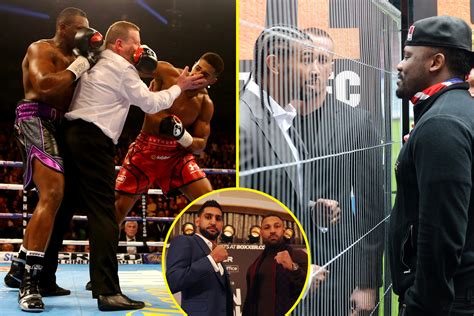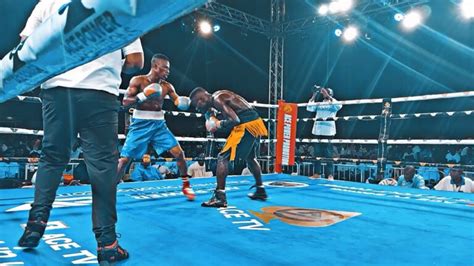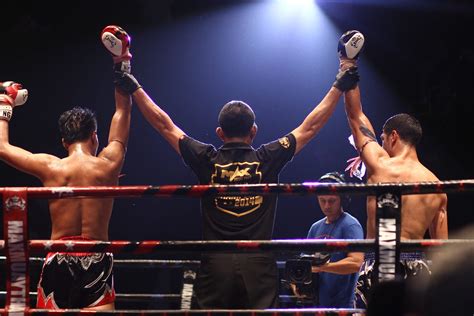Explore the biggest boxing rivalries, key factors, legendary boxers, memorable matches, and their impact on fans and culture in this comprehensive overview.Boxing is more than just a sport; it’s a spectacle defined by fierce competition, passion, and unforgettable rivalries. In The Biggest Boxing Rivalries: A Look At Classic Showdowns, we delve into the iconic matchups that have not only shaped the history of the sport but also captured the hearts of fans around the world. From the legendary clashes between champions to the underlying tensions that ignite these battles, we explore the essential elements that make these rivalries so compelling. Join us as we highlight the famous boxers at the center of these epic confrontations and analyze the lasting impact these matchups have had on fans and culture alike. Whether you’re a seasoned aficionado or a curious newcomer, this article promises to deliver an engaging journey through the thrilling world of boxing rivalries.
Understanding The Biggest Boxing Rivalries In History
The world of boxing has been shaped by numerous rivalries that not only highlight individual fighters’ skills but also captivate audiences worldwide. Among these, some of the most significant rivalries stand out, defined by intense competition, historical context, and the legendary status of the boxers involved. Understanding The Biggest boxing rivalries requires a look at their roots, evolution, and the factors that contributed to their prominence in the sport.
Historically, rivalries in boxing have often mirrored broader societal tensions or specific historical moments, enhancing their significance beyond the ring. For instance, clashes between fighters from different countries or backgrounds can evoke national pride and emotional investment from fans. This dynamic has played a crucial role in making some of the biggest bouts memorable.
Additionally, personal animosities between boxers can fuel their rivalries, intensifying the stakes of their encounters. A great example is the rivalry between Muhammad Ali and Joe Frazier, which was not just a sporting competition but a cultural phenomenon that symbolized the clash of ideologies during the 1970s. The three famous bouts between them are reminders of how personal relationships can elevate sporting events to historical significance.
| Rivalry | Year(s) | Notable Fights |
|---|---|---|
| Muhammad Ali vs. Joe Frazier | 1971-1975 | Fight of the Century, Thrilla in Manila |
| Oscar De La Hoya vs. Felix Trinidad | 1999 | The Ultimate Fight |
| Mike Tyson vs. Evander Holyfield | 1996-1997 | The Bite Fight |
These examples illustrate how The Biggest boxing rivalries transcend mere competition, creating a narrative that resonates with fans and inspires future generations of fighters. Understanding these rivalries helps to appreciate the sport’s rich history and the passion it ignites in both athletes and spectators alike.
Key Factors That Fuel The Biggest Boxing Rivalries
The dynamics of boxing rivalries are complex and multifaceted, often extending beyond the ring. Several key factors contribute to the intensity and longevity of these rivalries, making them some of the most talked-about events in sports history. Here are the crucial elements that fuel The Biggest boxing rivalries:
- Personalized Conflict: Many rivalries stem from personal animosities between fighters. Trash-talking, media feuds, and back-and-forth exchanges elevate the stakes of their matches, making it not just a competition but a battle of wills.
- Historical Context: A rich history between boxers or their respective camps can enhance rivalry narratives. Events from the past, such as previous fights, controversies, or shared training roots, often fuel ongoing tension.
- Cultural Significance: Boxers often represent larger societal narratives or demographics, adding layers of cultural significance to their matchups. This association can amplify fan loyalty and engagement, creating a more profound rivalry experience.
- Championship Titles: The pursuit of prestigious titles naturally builds rivalries. The stakes are higher when belts are involved—fighters are not just fighting for victory, but for legacy and historical recognition.
- Media Coverage: Sensationalized media coverage contributes to the rivalry narrative. Interviews, previews, and behind-the-scenes content shape public perception, often igniting fan passion and fueling the rivalry further.
By understanding these factors, fans and commentators can gain insight into why some rivalries have become iconic in the realm of boxing, shaping the sport’s cultural landscape and drawing the attention of millions around the world.
Famous Boxers Behind The Biggest Boxing Rivalries
Throughout the history of boxing, many legendary fighters have emerged, each contributing to The Biggest rivalries in the sport. These boxers have not only showcased their exceptional skills but also intensified the drama and excitement surrounding their matchups. Here are some of the most notable figures and their rivalries:
- Muhammad Ali vs. Joe Frazier – This iconic rivalry defined a generation. Their bouts, particularly the Fight of the Century in 1971, showcased not just their skill but also the cultural battles of their time.
- Mike Tyson vs. Evander Holyfield – Known for their contrasting styles, this rivalry reached its peak with two legendary fights, with the infamous ear-biting incident marking the climax of their competition.
- Oscar De La Hoya vs. Floyd Mayweather Jr. – A battle of contrasting personalities and styles, this rivalry brought a new level of interest to the sport, culminating in their highly publicized bout in 2007.
- George Foreman vs. Muhammad Ali – The Rumble in the Jungle resonates as one of boxing’s biggest upsets, highlighting the immense drama that rivalry can produce within the sport.
- Ricky Hatton vs. Floyd Mayweather Jr. – Their clash in 2007 captivated fans as an underdog story took on a showboating champion, showcasing the intensity of fan engagement.
- Sugar Ray Leonard vs. Roberto Duran – The animosity between these two legends produced thrilling encounters, particularly the No Más fight that remains etched in boxing history.
Every rivalry adds a unique narrative to the sport, and the boxer’s personalities involved often intensify the drama, making these encounters unforgettable. Their contributions to The Biggest boxing rivalries not only shaped the sport but also left a lasting impact on fans and culture alike.
Memorable Matches: The Biggest Showdowns That Defined Boxing
Throughout boxing history, certain bouts have transcended the sport, creating lasting legacies that resonate with fans and athletes alike. These memorable matches not only showcase the skill and determination of the fighters involved but also highlight the intense rivalries that define the sport. Here, we delve into some of the biggest showdowns that have left an indelible mark on boxing history.
| Match | Fighters | Date | Significance |
|---|---|---|---|
| The Rumble in the Jungle | Muhammad Ali vs. George Foreman | October 30, 1974 | A historic upset where Ali reclaimed the heavyweight title using his ‘rope-a-dope’ strategy. |
| Fight of the Century | Joe Frazier vs. Muhammad Ali | March 8, 1971 | The first meeting of two undefeated champions that drew massive attention and hype. |
| Thrilla in Manila | Joe Frazier vs. Muhammad Ali | October 1, 1975 | Considered one of the greatest boxing matches, showcasing incredible heart and determination from both fighters. |
| Scared to Death | Mike Tyson vs. Evander Holyfield | November 9, 1996 | Marked Holyfield’s victory over the feared Tyson, signaling a shift in the heavyweight division. |
| The Best vs. The Best | Floyd Mayweather Jr. vs. Manny Pacquiao | May 2, 2015 | A long-anticipated match between two of the sport’s biggest draws, illustrating the power of rivalry in boxing. |
These showdowns are just a few examples of how the biggest matches in boxing history have shaped the narrative of the sport. Each fight tells a story of rivalry, strategy, and drama, contributing to the rich tapestry of boxing’s heritage.
Impact Of The Biggest Boxing Rivalries On Fans And Culture
The impact of The Biggest boxing rivalries extends far beyond the ring, influencing not just fans but also the broader cultural landscape. These rivalries inspire passion, generate discussions, and even lead to the creation of legends in the sport. Fans often find themselves emotionally invested in the outcomes of these matchups, cultivating a sense of community and shared experience.
Boxing rivalries can incite a fervor that transforms casual spectators into dedicated followers of the sport. The anticipation that builds before a major fight fosters loyalty among fans, uniting them in support of their favorite boxers. This strong emotional connection often leads to packed stadiums, increased television ratings, and a surge in merchandise sales as fans rally behind their champions.
Culturally, The Biggest rivalries have permeated various aspects of society. They have inspired films, documentaries, and countless articles that narrate the stories of these epic clashes, emphasizing themes such as perseverance, pride, and redemption. Additionally, the athletes at the center of these rivalries often become cultural icons, influencing everything from fashion to social issues, as their personas transcend their athletic achievements.
Moreover, the conflict and drama surrounding these rivalries often provide a backdrop for addressing broader societal issues. For example, clashes between fighters from different backgrounds can highlight cultural divides, while also serving as a platform for discussions on representation and equality in the sport.
The influence of The Biggest boxing rivalries shapes not only the sport itself but also the fans who are drawn to the electrifying atmosphere they create. These rivalries build a cultural narrative, celebrating human emotion and athletic excellence, thus solidifying their place in the annals of sports history.
Frequently Asked Questions
What are some of the most famous boxing rivalries discussed in the article?
The article highlights famous rivalries such as Muhammad Ali vs. Joe Frazier, Mike Tyson vs. Evander Holyfield, and Manny Pacquiao vs. Juan Manuel Márquez.
How do these rivalries impact the sport of boxing?
These rivalries elevate the sport’s popularity, draw massive audiences, and often create memorable moments that define boxing history.
What makes a boxing rivalry memorable?
A boxing rivalry becomes memorable through intense competition, contrasting styles, personal animosities, and significant stakes in their matchups.
Are there any recent rivalries mentioned in the article?
Yes, the article briefly discusses recent rivalries like Canelo Alvarez vs. Gennady Golovkin, noting how they captivated boxing fans with their thrilling encounters.
What role does media play in building boxing rivalries?
Media coverage amplifies rivalries by generating hype through interviews, press conferences, and promotional events, ultimately shaping public perception.
How do rivalries affect the boxers involved both mentally and physically?
Rivalries can create added pressure for boxers, enhancing their motivation but also contributing to stress, which can influence their performance in and out of the ring.
What lessons can young boxers learn from classic rivalries?
Young boxers can learn the importance of resilience, the value of sportsmanship, and the need to develop a competitive spirit to succeed at the highest level.









